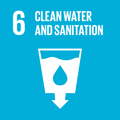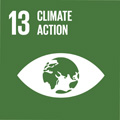- Docente: Daniele Fabbri
- Credits: 6
- SSD: CHIM/01
- Language: Italian
- Moduli: Daniele Fabbri (Modulo 1) Cristian Torri (Modulo 2)
- Teaching Mode: In-person learning (entirely or partially) (Modulo 1); In-person learning (entirely or partially) (Modulo 2)
- Campus: Ravenna
- Corso: Second cycle degree programme (LM) in Environmental Assessment and Management (cod. 5900)
Learning outcomes
At the end of the course, students have a knowledge of the chemical determinations adopted in the evaluation of environmental quality. They should be able to understand and apply methodologies in chemical environmental monitoring of pollutants in different compartments, criteria to assess the reliability of chemical data and tools for their interpretation in relation to the composition of environmental matrices (air, water, soil/sediment), to the sources of contamination and their effect on the environment.
Course contents
UNIT 1.
- Contamination and pollution.
- Chemical substances, molecular identity, natural and artificial, additives, byproducts.
- Elements and speciation.
- Polycyclic aromatic hydrocarbons.
- Chemical monitoring, evaluation of analytical results, method validation, figures of merit.
- Chemical characteristics of contaminants and matrices, vapour pressure, water solubility, distribution coefficients.
- Dissipation, degradation, photodegradation and ozone formation, greenhouse gas.
UNIT 2.
- Evaluation of environmental quality: pollution or contamination; environmental quality index and indicators; environmental quality standards; emission standards.
- Combustion pollutants: NOx, SOx, VOC, PMx
- Non-persistent pollutants: COD and BOD, organic load, oxygen balance of surface water bodies, pollution from water discharges, anoxia and dead-zones, hydrocarbons and petroleum.
- Heavy Metals Pollution: Copper, Zinc, Lead, Cadmium, Mercury; sources of pollution, speciation and accumulation in the food chain; the case of Minamata Bay.
- Persistent organic pollutants (POPs): organochlorine insecticides (DDT, HCH), polychlorinated biphenyls (PCB, structure / property relationship, sources), polychlorinated dibenzofurans / dioxins (PCDD / F), combustion pollutants, polybrominated flame retardants, organofluorinated compounds (PFAS).
- Plastics and solid pollution: chemical structure and environmental fate of macro-plastics, micro-plastics and nano-plastics.
- Laboratory activities: analysis of polycyclic aromatic hydrocarbons in water and PM2.5; source accounting through the use of a tracer (levoglucosan).
- Use of databases in bibliographic research.
Readings/Bibliography
Powerpoint presentation accessible in IOL.
Textbooks accessible on-line and/or at the "Biblioteca di SCienze Ambientali":
C.Baird, M.Cann. Chimica Ambientale, III edizione Italiana sulla V edizione americana. Zanichelli, 2012. Ozono stratosferico (Cap.1-2). Smog fotochimico (Cap.3). Metalli pesanti, speciazione Hg, As(Cap.12). DDT, PCB, PCDD/F, PBDE, PFAS, IPA (Cap. 13, 14, 15). Matrici (Cap. 10, 16).
B.B.Kebbekus, S.Mitra, Environmental Chemical Analysis, Blackie Acad.s, 1998. Cap.1 (misure ambientali), Cap.2 (campionamento ambientale), Cap.6(preparazione del campione), Cap.7 (analisi dell’aria).
Altri: Key concept in Environmental Chemistry G. Hanrahan. Ed. Academic Press;
http://www.sciencedirect.com/science/book/9780123749932 ; Chimica ambientale Environmental Chemistry, Stanley Manahan, Stanley E. Manahan
http [http://www.crcnetbase.com/isbn/978-1-56670-492-2]:// [http://www.crcnetbase.com/isbn/978-1-56670-492-2]www.crcnetbase.com/isbn/978-1-56670-492-2
Teaching methods
Lecturing, videoprojection, tutorials, utilisation of data base
for searching analytical methods (database, ecc), presentation and discussion of case studies from scientific literature or institutional reports ). Exercises in a chemical laboratory. All students must attend Module 1, 2 [https://www.unibo.it/en/services-and-opportunities/health-and-assistance/health-and-safety/online-course-on-health-and-safety-in-study-and-internship-areas] online, while Module 3 on health and safety is to be attended in class or on Microsoft Teams according to the modality chosen by the teacher. Information about Module 3 attendance schedule is available on the website of your degree programme.
Assessment methods
Oral examination. Students will be
required to shortly (5 minutes) describe a journal article dealing with a case study of
chemical monitoring. Questions will be concerned with the topis deakt with in the course. The knowldge of chemical structures of the main pollutants presented in the course. The report of the laboratory exercise will be also evaluated.
Teaching tools
Videoprojector. PC. Data base. Chemical laboratory equipments and instrumentations.
Links to further information
http://www.unibo.it/docenti/dani.fabbri
Office hours
See the website of Daniele Fabbri
See the website of Cristian Torri
SDGs


This teaching activity contributes to the achievement of the Sustainable Development Goals of the UN 2030 Agenda.
